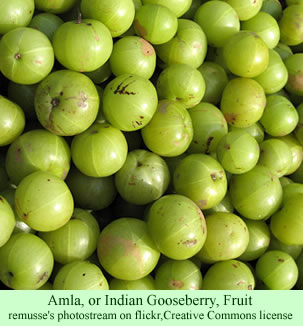The Indian state of Sikkim has launched a project to encourage people from Lepcha villages to plant amla saplings because of all the benefits they can obtain from their fruits.
 According to a news report last week, the Sikkim Medicinal Plant Board, part of the state Forest Environment and Wildlife Management Department, began the campaign at a school in Lower Dzongu. It is part of the “National Campaign on Amla,” a program supported by grants from the National Medicinal Plant Board in the central Indian government.
According to a news report last week, the Sikkim Medicinal Plant Board, part of the state Forest Environment and Wildlife Management Department, began the campaign at a school in Lower Dzongu. It is part of the “National Campaign on Amla,” a program supported by grants from the National Medicinal Plant Board in the central Indian government.
The campaign is encouraging people to plant amla in all possible places in the nation and to use the fruits extensively. Mr. Blacky Tsong, Assistant Commissioner of Forests for Sikkim, said that amla, a valuable source of medicines, is especially rich in vitamin C. He also argues that it has important cultural associations since it is worshipped as a sacred tree and as “Mother Earth” in many parts of India.
Mr. Tsong says that the small fruits from the tree have many practical values. They are used in candies, jams, pickles, juices, and as dried powders.
The amla, Phyllanthus emblica, also known as the Indian gooseberry, is a small deciduous tree which grows from 8 to 18 meters high. People have to climb the trees in the autumn to harvest the fibrous fruits, which are fairly bitter and astringent. According to an article in the Wikipedia, however, the fruits appear to have a number of quite significant medical benefits, such as healing properties for renal diseases, cancers, diabetes, and inflammations.
The Wikipedia article provides citations to medical research that demonstrates the reduction of blood cholesterol levels in human test subjects after treatments with extracts from the plant. Another research project reported on cures for diabetes in rats tested with the fruit extracts. Proponents claim many other health benefits from amla.
The fruits are used for culinary and other purposes throughout India. It is no wonder the government agencies are helping to spread the planting of such a tree. In the Lower Dzongu area of North Sikkim, four different primary schools, one junior high school, and one secondary school will have amla trees planted on their grounds.